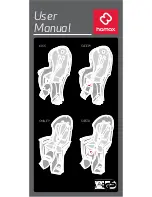
QuercusVL Programming Manual
constant speed from position 0 to position 2000.
6.2.1.1. Instructions
Each instruction will follow the next structure:
time, vehicle type, vehicle id, position
●
Milliseconds that the simulator has to wait from the performance of an instruction to the
execution of the next one. When the simulation reaches the last status, it will restart.
●
Vehicle type.
○
Car1: car, model 1.
○
Car2: car, model 2.
○
Van1: van, model 1.
○
Van2: van, model 2.
○
Truck1: truck, model 1.
○
Truck2: truck, model 2.
●
Vehicle identifier (integer value).
●
Position of the vehicle, in millimetres. It refers to the vertical axis of the image,
ignoring the position in the horizontal axis (as vehicles always drive on the centre of the
right lane).
6.2.1.2. Example
Example of two vehicles movement. The first vehicle drives from the bottom to the top of the
image. When bypassing the half, it increases its speed. Then the second car starts its
movement from the top to the bottom.
#1000ms after the startup, vehicle 1 (type Car2) is created on position 0.
1000,Car2,1,0
#4000ms later vehicle 1 must be on position 12500.
4000,Car2,1,12500
#1000ms later vehicle 1 must be on position 35000 (out of the image).
1000,Car2,1,35000
#0ms later vehicle 2 (type Van1) is created on position 35000 (out of the image).
0,Van1,2,35000
#2000ms later vehicle 2 must be on position -10000 (out of the image).
2000,Van1,2,-10000
6.3. Simulator
The simulator is available in two versions. "TSSimuGui" has a graphical interface and "TSSimu"
runs on command line. Both offer the same functionality.
The simulator will be started by opening a console (both Windows and Linux) and from the
"Bin" folder, the following command must be invoked:
Quercus Technologies
201
















































